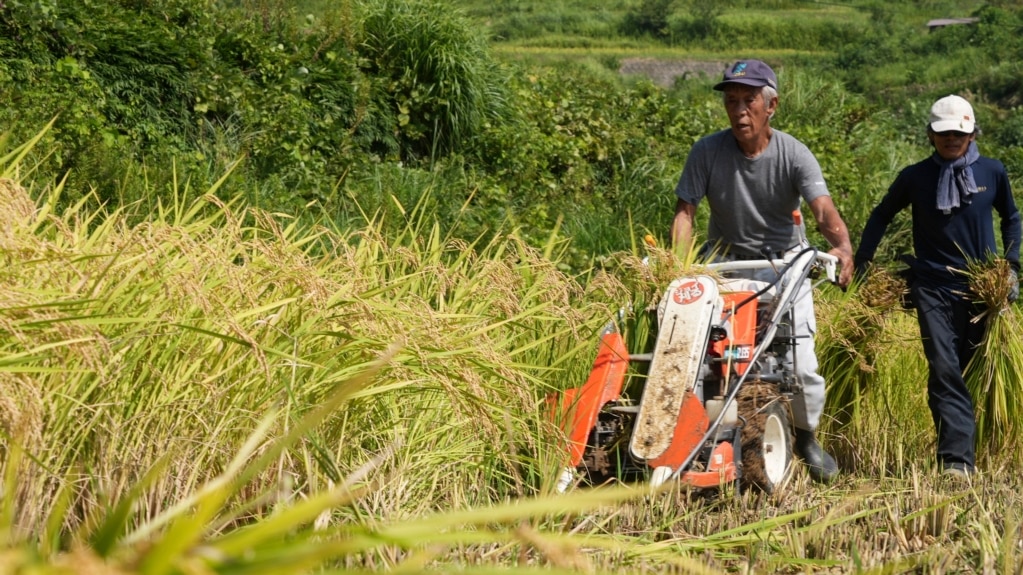In the Japanese village of Kamimomi, a small group of farmers began gathering their rice in extreme heat, two weeks earlier than usual.
Kamimomi is in Japan’s western Okayama prefecture. The area is called "the Land of Sunshine" because of its good weather. But farmers working in the mountainside rice fields say climate change is hurting the harvest of rice.
Joji Terasaka farms in Okayama. He said last year a hot period dried up the rice. He added, "I am worried about that this year because it will be just as hot."
This year Japan had its hottest July on record. The Japan weather agency said temperatures were 2.16 degrees Celsius higher than average. Worldwide, there has been a 1.2-degree Celsius rise in average temperature since 1850.
Scientists agreed that warming needs to be limited to 1.5 degrees Celsius to prevent the worst effects of climate change.
Last year, Japan had a poor rice harvest nationwide because of unusually hot weather.
Officials say the drop in harvest in Japan was partly responsible for a shortage of rice this summer. The low supply of rice in markets forced sellers to limit each buyer to one rice bag.
Yuji Masutomi is a researcher at the National Institute for Environmental Studies in Tsukuba, north of Tokyo. He said, "Perhaps people think that an increase of one degree Celsius in average temperature isn't much. But it's quite a big change for plants and crops."
Masutomi said the rising temperatures also hurt the quality of the grain. Last year, the farming ministry noted that at least one-fifth of rice farms have reported a drop in quality from rising temperatures. "Not only is the appearance not good; people say the taste drops too," Masutomi said.
Another problem the farmers in Kamimomi face is working under high heat. The average age of agricultural workers in Japan is nearly 69, among the oldest in the world. Older people are especially likely to suffer from the heat. For half of the year, farmers work in the heat to produce rice.
To deal with climate change, the government is urging the use of heat-resistant varieties of rice. One strain, developed by a research center near Tokyo, is called Sai no Kizuna.
Naoto Ohoka manages rice breeding at Saitama's Agricultural Technology Research Center. Ohoka said, "Last year and this year have been extremely hot, but even in those conditions, Sai no Kizuna maintained a certain level of quality.”
Sai no Kizuna was developed in 2012 to better survive high heat, wind and certain pests and diseases. Masutomi recommends that similar varieties of rice should be introduced across Japan by the 2040s.
But it can take up to 10 years to develop a new strain. After it is approved for the market, farmers must then decide to grow it.
The most widely grown strain of rice is Koshihikari, which does not do well in high heat. Even so, older farmers have not always been willing to change to other varieties. Farming ministry data show that heat-resistant varieties grow in only around 15 percent of Japanese rice fields.
I’m Jill Robbins.

